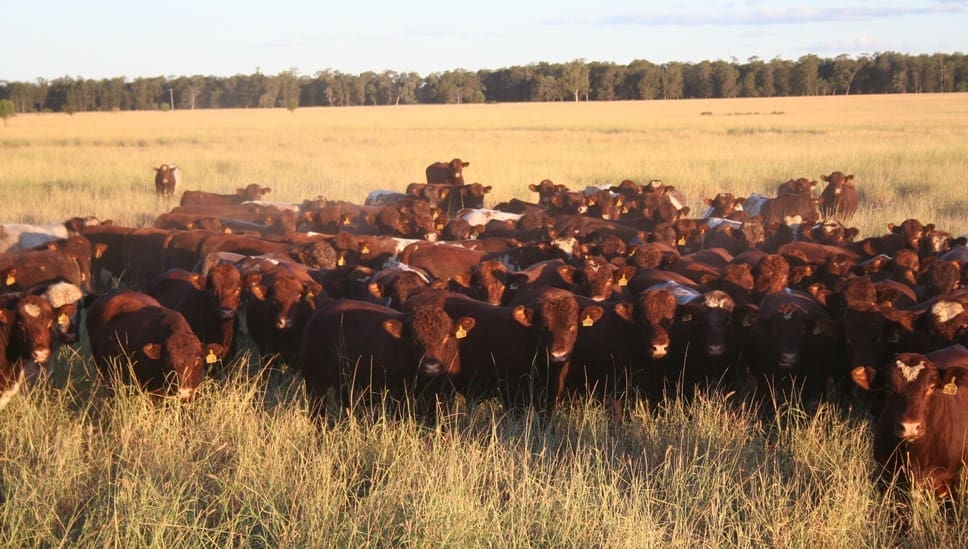
AUSTRALIAN Shorthorn seedstock producers are considering a move from the BreedPlan national performance recording system to the International Genetic Solutions’ (IGS) herd recording model.
While a final decision is still some way off, Shorthorn Beef members have been involved in a series of discussions on the topic since late last year.
Any final decision to adopt the IGS platform would be considered unusual, as every other significant Australian beef breed is aligned with Breedplan.
Some individual Australian seedstock producers independently subscribe to the IGS model, the largest multi-breed performance recording database in the world, with more than 18 million records across about 13 breeds.
Beef Central sought some clarification from Shorthorn Beef’s Graham Winnell about where the process is up to.
He stressed that any consideration of joining IGS had nothing to do with any lack of confidence or support for Breedplan, but was being driven by commercial reasons within the Shorthorn breed.
“It’s a complex process, and we are a long way from the finish line,” Mr Winnell said.
“We’re evaluating options. None of this is because of any dissatisfaction with Breedplan in any way. Breedplan is a fantastic herd performance recording system,” he said.
“But the world is becoming a global market, and things that were inconceivable 20 years ago are common practice today, and that applies as much to genetics as any other field.
“The beef industry is evolving so rapidly today, and we will probably see more movement in the industry in the next ten years that we have seen in the previous 30.”
Mr Winnell said the reasons for evaluating a move from Breedplan to IGS were ‘pretty specific’ to the Shorthorn breed, and the circumstances it faced in Australia.
“From where we sit, we are not a particularly big breed, in national terms. That gives us limitations, both in terms of resources and gene pool. Both the US and Canadian Shorthorn breeds subscribe to the IGS program. Adoption of IGS would allow us to put the US, Canadian and Australian Shorthorn populations in a single analysis on one database – all reporting the same Expected Progeny Differences (EPDs – similar to Breedplan’s Estimated Breeding Values).”
“As a breed of moderate size in Australia, such a move would greatly change our metrics,” Mr Winnell said.
Asked whether the traits measured and the way they were measured, would remain relevant for Australian conditions under IGS, Mr Winnell said many were, while some others would require some adjustment.
“If we talk growth and maternal traits, for example, they are highly comparable.”
“Meat quality traits are essentially the same – if we are going to measure rib-eye area or marbling percentage, we are still measuring exactly the same trait. What would change would be the targets – the US Shorthorn industry, for example, may be trying to hit one target market, while Australian breeders may be aiming to hit a somewhat different one.”
Certainly the environmental parameters between countries were different, but the whole purpose of performance recording was to remove the environmental factor, to evaluate only the genetic performance.
Where international comparisons became problematic was in sharing indexes, for example, which could become ‘near-impossible.’
“For example, we can’t weight production in an index for the same criteria that the US breeder may wish to. But across most of the other traits, there is a lot of similarity between traits in IGS and Breedplan.”
One of the attractions of having Shorthorn cattle across North America and Australia in the same analysis under IGS, would be to help fast-track genomic progress.
“We could start to share some of that information, as long as we’re developing pedigree linkages. It would also allow us as a group to reduce some of our overall cost requirement for this performance recording and genomic work,” Mr Winnell said.
But he said the last thing that Shorthorn Beef wanted to do was make a decision to adopt IGS ‘just because it was cheaper.’
“Everything else being equal, having the opportunity to save some money to tackle other challenges like building genetic resources for members would be attractive. One of the features of multi-breed under IGS is that it allows a breed to be very efficient in terms of how that is delivered. IGS has one of the best genetic science teams in the world.”
Perceived challenges included a need to re-educate stakeholders about the IGS model. For example IGS uses imperial measurements (pounds, inches) instead of metric.
“Converting everything to metric is only a five minute job, but the problem is we would not have that direct comparison with other countries. What we’d have to do to get around that would be to offer a rank percentage for each animal, for each trait – rather than worry about the EPD value itself. That would require educating people to understand and move to rank percentages, as opposed to EPDs/EBVs.”
Range of views being seen
Mr Winnell said that while there was a range of views being expressed by Shorthorn Beef members about a move to IGS, there had certainly been nobody who had simply dismissed it outright as a ‘bad idea.’
“But having said that, there are certainly breeders who want us to be absolutely sure that this is a good thing to do,” he said.
“I’d guess we are currently three-quarters of the way through the evaluation process. As the old saying goes, don’t rush the big jobs.”

Being a commercial breeder of shorthorn cattle it will be of a great advantage to us to performance record our herd
Great initiative by Shorthorn Beef to have a global standard to compare cattle both from different countries but also different breeds. I hope to see more breeds follow suit in the coming years.
I couldn’t agree more. Breedplan is very, very expensive. I know the hereford breeders have paid in millions of dollars over the years to breedplan for very little, when you consider all the data is all entered by the Breed Society.